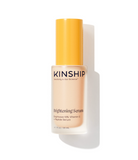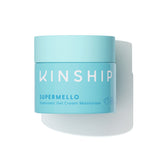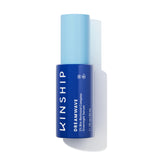Incorporating vitamin C, hyaluronic acid, and retinol into your skincare routine can help take your skin to the next level.
Each of these ingredients brings unique benefits to the table. When used correctly, they can transform your skin and help you achieve healthy, radiant skin.
Vitamin C brightens and protects, hyaluronic acid hydrates and plumps, while retinol renews and refines the skin.
It might seem complex at first, but understanding each ingredient's role and how they work together can simplify the process.
By layering them in the correct order, you can maximize their potential. We'll show you how to properly use these ingredients so that your skin gets all the love it deserves.
Recommended Products
Understanding the Benefits of Each Ingredient
To create a successful skincare routine, it is essential to understand what each ingredient does. The following sections will cover why incorporating vitamin C, hyaluronic acid, and retinol into your daily regimen is worthwhile.
Vitamin C Serum
Vitamin C is a powerful antioxidant that defends the skin from environmental damage.
The benefits of vitamin C serums include a brighter complexion and even skin tone for a glowing appearance.
Additionally, vitamin C combats free radicals. These unstable molecules can cause premature aging.
Adding vitamin C to your morning routine is an excellent way to boost skin brightness, fight environmental stressors, and set the stage for healthy, glowing skin all day long.

Hyaluronic Acid
Hyaluronic acid (HA) is a humectant, meaning it draws moisture from the environment into the skin. This makes it a key player in keeping the skin hydrated and plump.
One of its most impressive qualities is its ability to hold up to 1,000 times its weight in water. Any moisturizers with HA will provide an intense burst of hydration that leaves the skin feeling full and bouncy.
This hydration boost not only softens and smooths the skin but also enhances the effects of other ingredients by creating a well-hydrated base.
When used with face serums in a complete routine, HA helps the skin feel more supple and primes it to absorb the benefits of other active ingredients.

Retinol
Retinol, a derivative of vitamin A, is celebrated for its powerful ability to promote skin cell turnover.
It encourages the skin to shed old cells and generate fresh new ones. As a result, retinol helps to improve skin texture, revealing a smoother, more even surface.
This process also reduces the appearance of fine lines and wrinkles, making retinol one of the most effective ingredients for tackling visible signs of aging.
However, retinol must be used with care, particularly for those with sensitive skin. It can cause dryness or irritation if introduced too quickly or used in high concentrations.
Starting slow and building up gradually is key to getting the benefits without the drawbacks.

Can You Use Vitamin C, Hyaluronic Acid, and Retinol Together?
Yes, you can combine all three ingredients into your routine. However, a strategic approach is crucial to minimize irritation and maximize benefits.
Vitamin C, hyaluronic acid, and retinol each serve a different purpose. When used correctly, they offer a well-rounded approach to improving skin health.
However, some people may be concerned about potential irritation from using multiple active ingredients. The key is in how you apply and space out these products.
- Vitamin C works best in the morning to protect against free radical damage throughout the day.
- Hyaluronic acid can be used both morning and night to provide continuous hydration. It is also good for sensitive skin.
- Retinol should be reserved for the evening to promote skin cell turnover overnight.
A strategic approach ensures that each ingredient works effectively without overwhelming the skin.
How to Incorporate and Layer Vitamin C, Hyaluronic Acid, and Retinol In Your Routine

We will provide a step-by-step guide on how to add these powerful ingredients to your daily skincare routine below.
Following the right order ensures that each product works its magic, giving you the radiant, healthy skin you deserve.
Step-by-Step Morning Routine
The morning skincare routine is all about protection and hydration. Here’s a rundown of how you can incorporate vitamin C and hyaluronic acid in the morning:
- Cleanser: Start by cleansing your face with a gentle cleanser to remove any impurities and prepare the skin for the next steps.
- Vitamin C Serum: Now, apply a vitamin C serum to brighten the skin and protect against free radical damage. vitamin C works effectively during the day to shield the skin from environmental stressors.
- Hyaluronic Acid: Next, apply hyaluronic acid to draw in moisture and provide a hydration boost. This is why it is important to apply hyaluronic acid before moisturizer.
- Moisturizer: Follow up with a lightweight moisturizer to lock in all that hydration.
- Sunscreen: Finally, apply a broad-spectrum sunscreen of at least SPF 30.
Step-by-Step Evening Routine
The evening routine is all about giving your skin a chance to rejuvenate and lock in moisture after a long day. Follow the steps below to take care of your skin at night:
- Cleanser: First, cleanse your face to remove makeup, sunscreen, and any impurities that have built up throughout the day.
- Hyaluronic Acid: After cleansing, apply hyaluronic acid to hydrate and prepare the skin for Retinol.
- Retinol: Next, apply retinol, starting with a pea-sized amount to avoid irritation. Retinol helps address concerns like fine lines and uneven texture.
- Moisturizer: Cap off with a nourishing moisturizer to lock in hydration and keep the skin barrier strong. This ensures that the skin remains balanced and protected overnight.
Personalizing the Routine for Your Skin Type
To get the best results, we recommend tailoring your skincare routine to your skin type.
For example, people with oily or acne-prone skin may benefit more from a lightweight vitamin C serum since this product can provide powerful antioxidant benefits without feeling heavy or clogging pores.
Those with dry skin may benefit from layering a richer moisturizer over hyaluronic acid, which draws moisture into the skin.
If you have sensitive skin, you may need to introduce retinol more gradually to avoid irritation. Start with lower concentrations and use it less frequently.
By adjusting each product to suit your skin type, you can enjoy the full benefits of vitamin C, hyaluronic acid, and retinol while keeping your skin balanced and comfortable.
Tips for Using These Ingredients Safely

While these powerful ingredients can work wonders for your skin, it is important to use them carefully to maximize their benefits. Here are some practical tips to keep in mind.
Gradually Introduce Retinol
When starting with retinol, it is best to introduce it gradually to allow your skin to adjust.
Retinol is a potent ingredient that can cause dryness, redness, or irritation if used too quickly.
You can minimize these side effects with a few precautions. Start with a lower frequency, such as once or twice a week, and slowly increase it.
Over time, you can increase the frequency as your skin builds tolerance. This slow introduction helps minimize the risk of redness, peeling, or irritation.
Hydrate Your Skin to Avoid Irritation
As mentioned earlier, retinol can sometimes cause dryness. To counter this, ensure that your skin is well-moisturized after using products containing retinol. This can help prevent different skin conditions.
Use hyaluronic acid, a hydrating moisturizer, or a soothing gel to keep your skin plump and hydrated.
Applying hyaluronic acid before retinol can enhance moisture retention, making your skin more resilient to retinol's effects.
Additionally, allowing time between each product layer can improve your skin's ability to fully absorb each one. This is a great way to maximize the benefits while minimizing sensitivity.
These practices help buffer the skin against potential dryness and support the skin barrier, making it less prone to irritation.
Apply Broad-Spectrum Sunscreen
Both vitamin C and retinol can make the skin more sensitive to the sun, which is why you need to use sunscreen.
vitamin C can expose fresh, vulnerable skin cells to UV rays, while retinol accelerates skin cell turnover, which means new skin cells are exposed at the surface.
As such, remember to apply a broad-spectrum sunscreen with SPF 30 or higher daily to protect your skin from harmful UV rays.
Even if you are not using active ingredients, sun protection is non-negotiable regardless.
It is an essential step that prevents sunburn, hyperpigmentation, and other skin issues that could arise from increased sun sensitivity.

Do Patch Testing Before Regular Usage
We recommend doing a patch test before adding new products containing vitamin C, hyaluronic acid, or retinol to your skincare routine.
Patch testing helps identify any potential allergic reactions or sensitivities. It also ensures that your skin can tolerate the product.
Apply a small amount of the product to an easily-hidden area, such as the inside of your wrist or behind your ear. Wait 24 hours to see if any adverse reaction occurs.
If your skin does not react, you can gradually incorporate the product into your routine.
Avoid Over-Exfoliating
Retinol and vitamin C already promote skin cell turnover, so adding additional exfoliating products can lead to over-exfoliation.
Over-exfoliating can compromise the skin barrier and lead to irritation or damage.
To avoid over-exfoliating, it is important to be mindful of any other exfoliating ingredients in your skincare products. Some examples include alpha hydroxy acids (AHAs), beta hydroxy acids (BHAs), and physical exfoliants.
Combining these products with retinol and vitamin C can be too harsh.
We advise limiting exfoliation to once a week or avoiding it altogether if your skin shows signs of sensitivity. The goal is to keep the skin balanced and healthy without causing unnecessary irritation.
Listen to Your Skin
Every skin type is unique, and it is important to listen to your skin's needs.
If you notice redness, irritation, or peeling, consider reducing the frequency of retinol application. You can also consult a dermatologist for guidance.
Skincare is a journey, and it is important to be patient as your skin adjusts to these powerful ingredients.
Remember that consistency, rather than intensity, is the key to achieving the best results.
Frequently Asked Questions
What Can’t You Use With Retinol?
Retinol is a potent ingredient that works best when combined with gentle, hydrating moisturizers and hyaluronic acid.
However, it should not be used alongside ingredients like glycolic acid and benzoyl peroxide.
The above ingredients may clash with retinol’s effects, increasing the risk of redness, dryness, and sensitivity. If you want to incorporate these ingredients into your routine, consider alternating their use.
What Serums Go Well With Retinol?
Retinol works well with different serums like CoQ10.
It provides an antioxidant boost that protects the skin from environmental damage and enhances repair.
Niacinamide is another great option. It controls sebum, evens skin tone, and reduces redness. Together, these serums support a resilient, balanced complexion when using retinol.
When Should I Stop Using Vitamin C Serum?
You should stop using vitamin C serum once it begins to show signs of oxidation. These signs include a darkened color or a change in smell.
Vitamin C tends to oxidize faster than other products, so for maximum effectiveness, we recommend using the serum within 3-6 months of opening.
If your serum has been open for longer and shows these changes, it may have lost potency and could irritate the skin, so it is best to discontinue using it.
Key Takeaways on How to Use Vitamin C Serum, Hyaluronic Acid, and Retinol In Your Skincare Routine
Incorporating Vitamin C, hyaluronic acid, and retinol into your skincare routine is the first step to an exciting journey toward healthier, glowing skin.
Each of these superstar ingredients plays a unique role. When used in the right order, they bring out the best in your skin without causing adverse reactions.
Remember, consistency is key. Give your skin time to adjust, be patient, and always protect it with sunscreen.
Personalize your routine to suit your skin's needs, and enjoy watching your complexion transform. Using these ingredients will help you achieve a glowing, youthful look!



